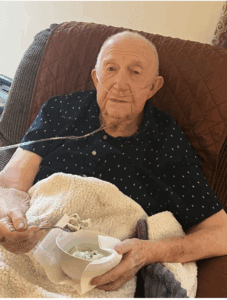instituteforcreativemindfulness.weebly.com/icm-blog-redefine-therapy/fighting-dissociation-phobia-and-coming-out-as-a-professional-with-a-dissociative-disorder-dr-jamie-marichAs you read the title of this article, I am somewhat scared about how you are judging me…judging us. If your information about dissociative disorders—or what the general public may still call “multiple personalities” – is from the movies (e.g., Split, Sybil, Primal Fear), we assure you, what you’ve learned about us is inaccurate. When I say dissociative disorder, it’s not lost on us that many of you reference these portrayals and maybe even assume that a deeply disturbed, murderous “alter” will pop out and get you. Or that, like in Primal Fear, our struggles are all an act to get us off the hook for bad behavior. What saddens me the most is the level of phobic responses to dissociation that we witness from other professionals in our helping fields—mental health and addiction recovery—even from those who claim to specialize in trauma treatments like EMDR therapy. Terms like Islamophobia, homophobia, and transphobia are now regularly used in public discourse. We assure you, dissociation phobia is a real thing and needs to be added to the list.
Every week we hear of or directly encounter stories like these:
- Clinical professionals asking at trainings or in group clinical forums if they should “screen out” for dissociation in their clinical practices, essentially turning away the traumatized clients who most need the help.
- Turning people away from treatment after they show signs of more severe dissociation out of fear that the clinician won’t be able to “bring them back,” or that one of the parts will cause serious harm.
- Clinical trainers taking extreme measures to stop the first signs of dissociation that training participants (fellow therapists) show in practicum sessions. Therapists often have similar reactions to their dissociative clients in sessions.
- Improper or forced admission to inpatient psychiatric facilities under the justification of what the therapist perceives as harm to self or others, when most inpatient facilities which operate under the strict edicts of the medical model are often the most unsafe places for us.
This is a short list composed only of clinical examples. We can fill an entire book of tales on how family, friends, and the public are quick to label us crazy or defective when, in reality, the dissociative mind is one of the most beautiful constructs of creation.
Our minds are prismatic, multi-dimensional, and capable of solving problems that empirical science and its numeric precision can’t even begin to figure out. Many of us are extremely high functioning, creative, intelligent, and capable of bringing about real change in the suffering world because most of us can instantly respect and evaluate multiple sides of a story. Yes, we can be plagued by deep suffering and distress that can impair daily living, especially when triggered, invalidated, or negated. When we’re given the tools for healing—which must start with having our own experiences validated and our existence affirmed—the power of our post-traumatic growth may stun you.
The first client with dissociative identify disorder (DID) I ever treated with EMDR therapy expressed, “People fear what they don’t understand,” in attempting to explain his dissociation, an adaptive response to unspeakable early childhood abuse. Our own experience amends this statement slightly, “People fear what they can’t understand.”
The next phase of my work as a public figure in my field is to do my best to help you understand. It’s scary—we’ve been “out” as a recovering addict throughout our career and in recent years we’ve been fully out in all areas of our life as a bisexual woman. Being out as dissociative isn’t exactly a newsflash if you’ve followed my work closely over the years (I reference it in both of my books on EMDR therapy and disclosed my full diagnosis in an article with Psyched last year). However, coming out this boldly (to the level of using singular we pronouns…did you notice the fluctuation between I and we?) feels like the riskiest step I’ve/we’ve ever taken as a professional and a public figure.
We can hear our colleagues now—which include other writers and trainers in the field—snickering behind our back or in some cases in front of it. They have the potential to write me off as a crazy, unstable, untreated girl who loves the attention. Trust me, we’ve considered the reality that others may try to discredit us and we are remarkably okay with that; it shows just how significant of a phobia we are addressing. We fear that in the current political climate where such a fear of the other abounds, we’ll either be dismissed or targeted for how we interact with the world. A side effect of my dissociative mind has been a fierce love of diversity and pluralism, to the point where even our own liberal friends fear us for combating the cut-and-dry, us vs. them labeling that abounds in these modern times. Loved ones have even threatened or attempted to use my dissociation and its complications against me/us, threatening to expose how bad it can get to make me seem less credible.
I was diagnosed with Dissociative Disorder, NOS (now Unspecified Dissociative Disorder) in 2004 and I am one criterion away from qualifying for a full Dissociative Identity Disorder diagnosis (I have never been and am not amnesic about the experiences of my parts). Although dissociation was a mixed blessing of a survival response and a paralysis in my earlier life, the growth I’ve experienced through being properly diagnosed and treated has helped me to embrace how my mind works instead of resent it. You may be puzzled as to why I can be so candid about something that seems, on the surface, so dramatic. Here is the truth bomb—we all dissociate and we all have parts that compromise our internal worlds. I can come out so freely now because I’ve come to learn that I am not that much different from the rest of you.
Understanding how you personally dissociate and how your parts work is an important first step in understanding what those of us who surpass the clinical threshold experience. Are you ready for this? This may feel a bit daunting if you’ve never looked at it before.
Know Your Dissociation Profile
Have you ever daydreamed?
Have you ever drifted off or zoned out a little, especially when you were feeling distressed or bored?
Do you dive in to Netflix binges to numb out from life or imbibe in intoxicants, especially as a method of escape?
Congratulations—you’ve dissociated!
To overstate what may seem obvious, we all have. If you are a therapist, have you ever led your clients through a guided imagery exercise like the Calm Safe Place, prompting them to visualize “somewhere else” to relax? Yup—you’ve deliberately elicited dissociation, albeit a form that is adaptive for many. There’s a chance you may even like and make use of such an exercise yourself.
For those of us who dissociate regularly and tend to cross more clinically significant lines, the response to shut down or escape in our own minds developed early and became a bit more ingrained. It can be more difficult to come back to the present moment, especially if what we’re coming back to is highly distressing. Yet with the tools of recovery and wellness, especially those skills that can be learned in the realm of grounding and embodiment, we can.
As a kid, one of the abusive figures in my life routinely said, “Jamie looks like she’s been beaned in the head with a fastball.” Probably because I was daydreaming so hard to tune him out! My vivid imagination took me to some pretty incredible places and the hope I drew from these places made real life slightly more bearable. As I transitioned into adulthood, I experienced significant difficulties distinguishing fantasy from reality, which made coping with alcohol and pills (more tangibly dissociative methods) appealing. If these themes resonate with any aspect of your personal experience, you are well on your way to understanding our experience.
Many teachers describe dissociation as a continuum phenomenon. We all dissociate, some more than others, and the experience may manifest differently at different times depending upon the nature and intensity of stressors. Although the continuum is a good start if you can wrap your mind around this description, for me the idea is too linear. I prefer to think of dissociation as prismatic. Light flows through a prism to reflect a series of colors—the more angles on a prism, the more dramatically light splits as it comes through—resulting in fascinatingly complex and stunningly beautiful patterns and fragments. For a prism to be a prism, at least two angles made of material transparent to the wavelengths of light for which they are designed must exist. Some folks have two angles, others have hundreds. The more intense the light (which can be cast as a metaphor for life stressors in this case), the more radiant the reflection. For those of us who have learned how the angles of our prism serve us under stress, radiant is a great adjective. Prior to learning how they work, the dispersion of light can feel blinding and confusing, to us and to others in our lives. Hence, shutting down the prism altogether can become more appealing. When you notice us go offline in our affect, this could be what’s happening for us.
In discussing dissociation and its various expressions, it’s useful to discuss parts. Although the word “alters” may still be used in context around DID, parts has become a more widely accepted and less shaming term; particularly because even the most conservative, set-in-their-ways reader of this article can identify two or more of their own internal parts.
Do you ever reference having an inner child?
Do you ever see yourself as being one person at home and one person at work?
Are you calm overall yet notice certain things can trigger a rage response in you, like the Hulk popping out of Bruce Banner?
Congratulations—you have parts!
The same parts or internal experiences that shape the theater of your life are similar to what we experience. Ours just may be a tad more fragmented, to the degree that we’ve given them names, numbers, or colors in assigning their roles. Our parts regularly dialogue with each other and fight with each other, just like the discord that you may witness between family and friends. These parts generally developed at different times in our life journeys in response to traumas and other stressors to keep us safe and protected. Some of these parts may still show up as more pronounced when certain situations or triggers wreak havoc in our systems. When parts and their characteristics show up as more pronounced, if you are a therapist or loved one, it does little good to think in terms of, “What’s wrong? What’s happening?” Instead, try “What are you being protected from right now? How is this part protecting you?”
Many of our parts can be quite delightful and even serve us in our public lives and others have the potential to create more problems for us in terms of acting out or shutting us down. Telling those parts to shut up or go away is generally not helpful. They need to be heard. Moreover, placating any one part or even our whole systems with platitudes like, “You’re in a safe place” is generally not productive either. Listen to the part or the series of parts that are most activated and ask them what they need to experience more safety in any given moment. Yes, if you are a therapist some of the parts may scare you or cause you grief. That doesn’t mean that we love or value our parts any less or that integrating these parts into some homogenous alloy is the best solution. Even the parts that we tend to hate or resent for causing us more grief in our adult lives can serve a purpose and resent, maybe even more than the others, this suggestion of classic integration.
Think of the common metaphor of the melting pot that gets used to describe the American nation—i.e., these disparate nationalities coming together, melting down to emerge as “American.” This metaphor has been challenged by many scholars and thinkers because it suggests there is such a thing as an ideal American. Instead, the tossed salad or a pot of stew is proposed as a better metaphor because all the different parts or ingredients contribute to making a tasty whole. With clients who can seem more affected by certain parts reacting to stressors, get to know the composition of the stew or the salad and what it tastes like (or could taste like) when the ideal blend and preparation of ingredients are achieved. If one day there are more tomatoes (for example) than usual, there is likely a reason for it…and don’t assume that the excess tomatoes just need to be cut out. They may be meeting a nutritional need, metaphorically speaking.
The metaphors for understanding parts and how they interplay are various. Explore which ones may work to describe your experience and help clients to determine which ones may work for them. Some like to use versions of a conference or kitchen table, a van, a house, or even a bundle of balloons. My preferred metaphor for my dissociative experience can be explained through Dorothy in The Wizard of Oz. Besides my presenting self (Dorothy), I have three distinctive parts of various ages who serve roles like the Scarecrow, the Tin Man, and the Cowardly Lion. There is also an older, sage/crone part who has more of a spiritual, ethereal presence within me like Glinda the Good Witch. (If you are a fan of Wicked, yes, this sage/crone part is a mixture of Glinda and Elphaba.) Dorothy needed all of them to tap into the vital truth and learning of the story: “You’ve had the answer in you all along.” Dorothy needed all of them to get home.
All of us who dissociate to the level that may cause you to be scared of us are just searching for that yellow brick road that will take us home.
Will you shame us on our quest?
Or will you help us?
If your answer is the latter, thank you for taking the first step by reading this article. May you keep journeying on in your desire to understand your clients, which happens by first learning more about yourselves.
Photograph by Dr. Jamie Marich (March, 2018: Dubai, UAE)















2 Responses
I am a therapist and I am dissociative. I came out as dissociative 3 years ago when I presented a talk at a local mental health providers network meeting.
Also, at a workshop I talked about shame and how it interplays with my diagnosis: that I KNEW there were therapists in the room who would judge me… and there were!
I am currently writing about my own journey and hoping to come out to a wider audience. We are a funny bunch, we counsellors: we still have those in our midst who hold an us-them mentality, because SHAME has not been worked through.
We are a DID system diagnosed back in the days that we were labeled as MPD We run a DID self help groep where most of our efforts are geard to dealing with stigma and internalised sigma and to increasing system acceptance and care.
We made the decision to be out as a system 4 years ago as our activism when we were told traight out by the police we could not file a report of out abuse becouse we have DID and the court would never beloven is.
This world needs people to come out as multiple but it is so hard. There is so much stigma we encounter very day. Companies to our gayness the amount of fobia we encountered in the western world for being multiple is vast.
Thank you for adding your voice for acceptable. Maybe one day we may ask for acceptance with out having to explain that we are not scary or crazy.